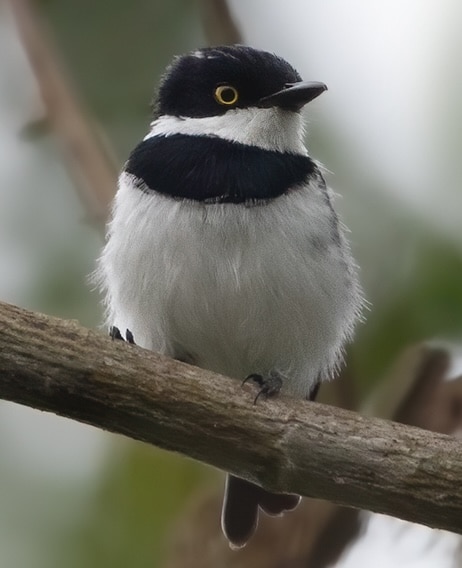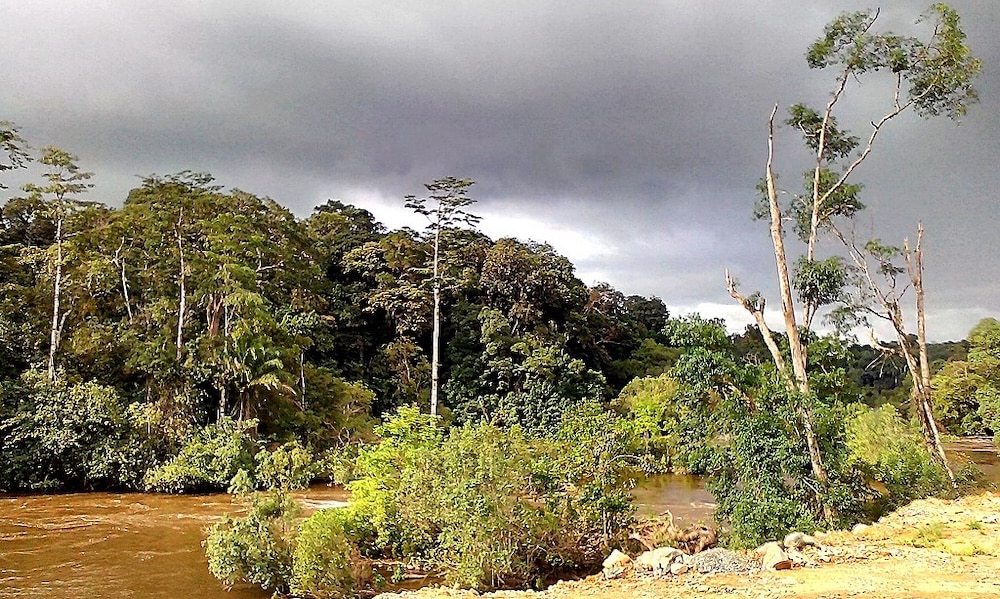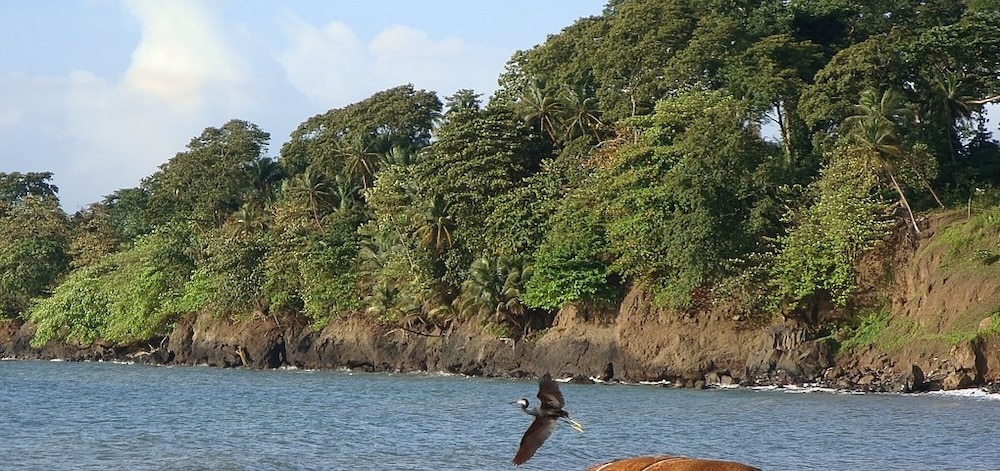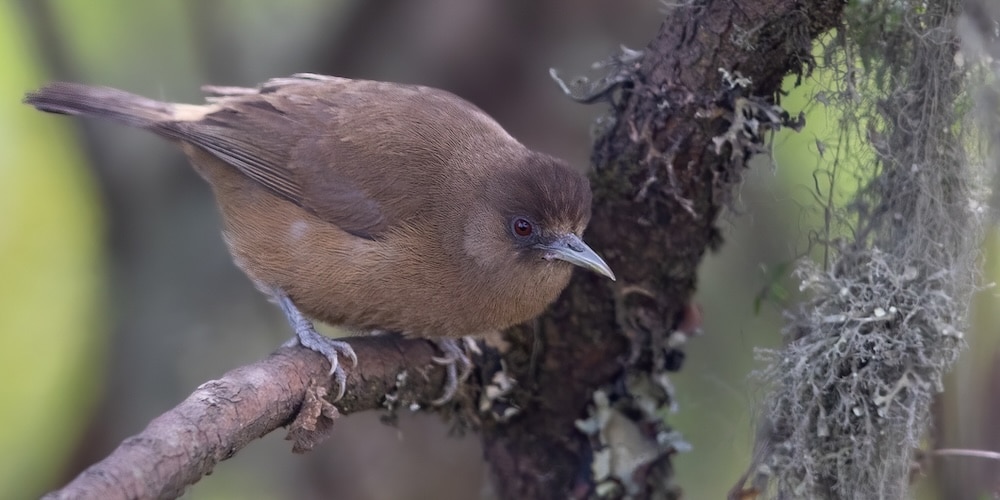Republic of Equatorial Guinea

Equatorial Guinea is a country on the west coast of Central Africa, with an area of 28,000 km2 (11,000 square miles). Formerly the colony of Spanish Guinea, its post-independence name refers to its location near both the Equator and in the African region of Guinea although almost all of the country is actually north of the equator. It is the third smallest country in continental Africa in terms of population, with c.1,8 million people. Its official language is Spanish.
The country consists of a mainland territory, Río Muni, which is bordered by Cameroon to the north and Gabon to the east and south, and five small islands, Bioko, Corisco, Annobón, Elobey Chico (Small Elobey), and Elobey Grande (Great Elobey). Bioko, the site of the capital, Malabo, lies about 40 kilometres off the coast of Cameroon. A new capital in the heart of the mainland, Ciudad de la Paz is under construction with government offices already moved there. It is expected to soon became the largest city. Annobón Island is about 350 kilometres west-south-west of Cape Lopez in Gabon. Corisco and the two Elobey islands are in Corisco Bay, on the border of Río Muni and Gabon. The largest river is the Benito known locally as the Mbini River, which flows in its westerly part through the Monte Alen National Park, where it is known as the Uoro River. It river rises in Gabon and crosses into Equatorial Guinea where it divides the country roughly along the middle, running east to west. At the mouth to the Atlantic Ocean lies the town of Mbini, as well as large mangrove stands that extend 20 kilometres inland.

Mbeni River – ©Blitz1980 CC BY-SA 4.0 via Wikimedia Commons
Equatorial Guinea has a tropical climate with distinct wet and dry seasons. From June to August, Río Muni is dry and Bioko wet; from December to February, the reverse occurs. In between it, there is a gradual transition. Rain or mist occurs daily on Annobón, where a cloudless day has never been registered. The temperature at Malabo, Bioko, ranges from 16 °C to 33 °C, although on the southern Moka Plateau, normal high temperatures are only 21 °C. In Río Muni, the average temperature is about 27 °C. Annual rainfall varies from 76 inches at Malabo to 430 inches at Ureka, Bioko, but Río Muni is somewhat drier.
The discovery of sizeable petroleum reserves in recent years is altering the economic and political status of the country as hydrocarbons make up 97% of its exports!
Birding Equatorial Guinea
Equatorial Guinea spans several eco-regions. Río Muni region lies within the Atlantic Equatorial coastal forests ecoregion except for patches of Central African mangroves on the coast, especially in the Muni River estuary. The Cross-Sanaga-Bioko coastal forests ecoregion covers most of Bioko and the adjacent portions of Cameroon and Nigeria on the African mainland, and the Mount Cameroon and Bioko montane forests ecoregion covers the highlands of Bioko and nearby Mount Cameroon. The São Tomé, Príncipe, and Annobón moist lowland forests ecoregion covers all of Annobón, as well as São Tomé and Príncipe.
The country is home to gorillas, chimpanzees, various monkeys. Other mammals include Leopard, buffalo, antelope, elephants, hippopotamuses, and various reptiles and amphibians, including crocodiles and nesting turtles.

Altos de Nsork National Park – ©Mehlauge CC BY-SA 4.0 via Wikimedia Commons
Equatorial Guinea is one of the least surveyed ornithologically, so bird records are limited. A survey in 2014 recorded 246 species which included six species never recorded there before including Pel’s Fishing Owl Scotopelia peli, Lyre-tailed Honeyguide Melichneutes robustus and Yellow-throated Leaflove Atimastillas flavicollis. More have been reported since. That survey was also able to extend the distribution maps for a number of birds. In the past most work had been done on Biko and, to a lesser extent Annobón. Given that even the most recent surveys have been confined to small areas much may still be left to be discovered. Few birdwatchers have ever visited this small country, but, since oil revenues and the building of the new capital more people are visiting for work or tourism. This will inevitably lead to more discoveries, but will also have negative impact as remote areas are opened up. It remains a country of riches and abject poverty with 65% of the population earning a dollar a day! Hunting for ‘bushmeat’ is common and poaching is rife even in the protected national parks and reserves.

Bioko Island – ©ColleBlanche CC BY-SA 4.0 via Wikimedia Commons
Hope lies with active NGOs such as the Bioko Biodiversity Protection Program, the Instituto Nacional de Desarrollo Forestal y Manejo del Sistema de Áreas Protegidas (INDEFOR-AP), the Amigos de la Naturaleza y del Desarrollo de Guinea Ecuatorial (ANDEGE) and others.
Protected areas cover 5,228 km2, or 19% of the country’s land area. Pico Basilé National Park was designated as an Important Bird Area (IBA) by BirdLife International because it supports significant populations of Cameroon Olive-pigeons, Green Longtails, White-tailed Warblers, Mountain Saw-wings, Western Mountain Greenbuls, Cameroon Olive Greenbuls, Black-capped Woodland-warblers, the endemic Bioko Speirop, Cameroon Sunbirds, Ursula’s Sunbirds and Shelley’s Olivebacks. Altos de Nsork National Park is also an IBA.

Bioko Speirops Zosterops brunneus – ©Dubi Shapiro
Monte Alén National Park holds populations of Goliath Frog, the world’s biggest frog, and is also an IBA. Some of its prominent species are Grey Cuckooshrike, Pink-footed Puffback and Black-capped Woodland-warbler; Uganda Woodland-warbler, Grey-necked Rockfowl, Zenker’s Honeyguide, Tessmann’s Flycatcher and Gabon Batis.
-
Wikipedia
GNU Free Documentation License
https://en.wikipedia.org/wiki/Equatorial_Guinea
-
Number of bird species: 837
(As at January 2025) -
Number of bird species: 451
Mainland
Number of endemics: 5
2 confined to BiokoBioko Batis Batis poensis
Bioko Speirops Zosterops brunneus& 3 to Annobon:
Annobon Scops Owl Otus feae
Annobon Paradise Flycatcher Terpsiphone smithi
Annobon White-eye Zosterops griseovirescens
-
Avibase
PDF ChecklistThis checklist includes all bird species found in Equatorial Guinea , based on the best information available at this time. It is based on a wide variety of sources that I collated over many years. I am pleased to offer these checklists as a service to birdwatchers. If you find any error, please do not hesitate to report them. -
Avibase - Mainland
PDF ChecklistThis checklist includes all bird species found in Equatorial Guinea (mainland) , based on the best information available at this time. It is based on a wide variety of sources that I collated over many years. I am pleased to offer these checklists as a service to birdwatchers. If you find any error, please do not hesitate to report them. -
E-Bird
PDF ChecklistThis checklist is generated with data from eBird (ebird.org), a global database of bird sightings from birders like you. If you enjoy this checklist, please consider contributing your sightings to eBird. It is 100% free to take part, and your observations will help support birders, researchers, and conservationists worldwide. -
Wikipedia
Annotated ListThis is a list of the bird species recorded in Equatorial Guinea. The avifauna of Equatorial Guinea include a total of 837 species.
-
Birds of Western Africa
| By Nik Borrow & Ron Demey | Christopher Helm | 2014 | Paperback | 592 pages, 266 plates with colour illustrations; colour distribution maps | ISBN: 9781472905680 Buy this book from NHBS.com -
Las Aves de Bioko, Guinea Ecuatorial: Guía de Campo
| By Jaime Perez de Val | Edilesa | 1996 | Paperback | 240 pages, Colour plates, b/w illlustrations, maps | Text Spanish | Out of Print | ISBN: 9788480121453 Buy this book from NHBS.com
-
African Bird Club
WebsiteFew birdwatchers have ever visited this small country in West Africa or even know where it is situated, ornithological records are limited and many areas have not been surveyed. Only about 340 species have been recorded on the mainland, Rio Muni, whilst 198 species have been recorded on the island of Bioko and 19 species on the island of Annobón. Bioko and Annobón both have endemic species and subspecies. It is a country therefore which offers potential opportunities for the professional ornithologist and perhaps much of interest for the more adventurous birdwatcher… -
Bioko Biodiversity Protection Program
WebsiteThe Bioko Biodiversity Protection Program: Unique opportunities for biodiversity research and conservation in Equatorial Guinea -
Equatorial Guinea Bird Initiative
WebpageBiodiversity Initiative is a not-for-profit research and conservation collaborative that exists to conserve biodiversity through ecology, exploration and education. -
West African Ornithological Society
WebsiteWest Africa, for the purposes of the Society, had boundaries undetermined at first, but was eventually defined as comprising 28 countries.
-
*List of protected areas in Equatorial Guine
InformationSatellite ViewNational Parks, Nature and Scientific reserves etc. -
NP & IBA Altos de Nsork National Park
Observatory WebsiteSatellite ViewThe terrain is one of high hills, with low and dissected terraces. The park covers 700 square kilometres (270 sq mi). The area is bounded on the west side by the Abang River, and on the east and south by roads; there are few roads in the park. -
NP & IBA Pico Basilé
InformationSatellite View...a protected area with the status of national park on the island of Bioko in the northern part of the African country of Equatorial Guinea. It stands out for its diversity of landscapes and vegetation and especially for its population of primates, that are threatened by the illegal hunting. -
NP Monte Alén
InformationSatellite ViewIt was established in 1990 in the centre of the country with an area of 2,000 square kilometres (770 square miles). The park has recorded 265 species of birds. Some of the prominent species include three montane species, Coracina caesia, Dryoscopus angolensis and Phylloscopus herberti; Phylloscopus budongoensis, the only warblers species found in the park; Picathartes oreas; Melignomon zenkeri; Muscicapa tessmanni and Batis minima; possibly Apus sladeniae.
-
Rumbo Malabo
Local Tour OperatorUndoubtedly, our country is blessed with an abundance of natural wealth. Our privileged location on the coasts of Africa and the Gulf of Guinea gives us unique flora and fauna found nowhere else in the world.
-
Equatorial Guinea Birds
InformationThe Republic of Equatorial Guinea is comprised of three separateregions, two of which are islands in the Gulf of Guinea and the third is part of the neighbouring mainland.

